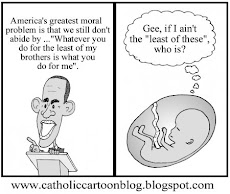For those of you who live a sheltered life, I have news for you: there really are real, live Communists alive and kicking today. Yes, real, live, actual "let's start the revolution, take over the government and the media, and then kill all the capitalists" type Communists. While it may be true that most people consider Communism to be passe, the supposedly dead corpse roams the earth refusing to die like a zombie out of a horror movie.
In fact, it is dangerous to think that the idea of Communism is dead when it has just gone partially underground inside the universities of the West and in the minds of many union activists, communist party activists, plus various people in many left-wing organizations including feminist and environmentalist organizations.
A vague version of the basic idea of communism continues to lurk in the minds of many people today, including those who have accepted the failure of actual communist states in the 20th century. The basic idea is that, in a just society, income ought to be basically equal and so everyone deserves to be supported by the government whether they work or not and taxing the rich is justified - in fact morally mandated - as the means to this end. It is a grave mistake to think that this basic idea of communism no longer powers action in our world just because the Soviet Union has collapsed. It is particularly dangerous to think this can be accomplished without violence and economic collapse.
It is the idea of communism that forms the subject of Alain Badiou's book: The Communist Hypothesis. Badiou is a French intellectual, writer and university professor who occupies a position on the political spectrum to the left of the Communist Party of France. A lot of people probably wouldn't even believe that there is anything to the left of the Communist Party of France! But there is and it is called Maoism. Badiou's book is even published in a small, red, hardback format reminiscent of Mao's Little Red Book.
In the middle of the 20th century Communism was in crisis. the crisis was caused by Nikita Khrushchev, who gave his famous "secret speech" to the Twentieth Party Congress on February 25, 1956 in which he exposed and denounced the purges of Stalin and purportedly inaugurated a "less repressive era" in the Soviet Union. This turned what had been a moral crisis into a public relations or propaganda crisis and led to a number of responses in world communism.
First, most of the Communist Parties in the West divided into Stalinist and non-Stalinist factions. The non-Stalinists claimed that what happened under Stalin in the USSR was not "true Communism" and tried to maintain some critical distance from the Soviet Union thereafter.
Second, some Communists underwent an intense struggle of conscience which ended with their conversion to liberalism and capitalism such as Whittaker Chambers.
Third, some of those previously sympathetic to the USSR in the West responded by becoming social democrats or democratic socialism. They attempted to distinguish between socialism and communism and tried to maintain an appreciation for Marx while viewing the Soviet experiment as the betrayal of Marx. Communists were thus Marxist-Leninists, while the non-communists were Marxian socialists. They often called themselves "Neo-Marxists" to stress the difference.
Fourth, there was the rise of the New Left in America in the early 1960s. They were more influenced by the "critical theory" of the Frankfurt School and cultural Marxism than they were by communism per se. They attempted to re-formulate Marxism in a new age by focusing on oppressed minorities, Third world people struggling for liberation, women, and students instead of the proletariat. Their goal was to overthrow the cultural institutions that resist Communism: the Church, the Family, the Military and Big Business. Their method was through the infiltration of the universities, the entertainment industry and the mass media.
Fifth, there was a strong movement in France to embrace the Maoist cultural revolution and this movement had American branches in the more radical student groups of the 60s such as the Black Panthers and the Students for a Democratic Society. Many of these people went to Vietnam and proclaimed their support for the Chinese-supported North Vietnamese regime including Jane Fonda and others.
Badiou's book is a manifestation of the fifth response to the revelation of Stalin's crimes. It professes to be a different kind of Marxism from the Soviet model. It is similar in important ways to the fourth, cultural Marxist approach of the New Left, and the third approach of Neo-Marxism. It goes beyond economics to culture and it tries to be non-Stalinist. But it is different from these two approaches - which are designed for consumption in the still somewhat anti-Communist West - by its frank and open embrace of revolutionary violence.
Badiou proclaims his everlasting fealty to the movements symbolized by two dates: the Paris Commune of 1871 and the Student Revolutions of May 1968. Each is treated in its own chapter in this book and both are viewed as precursors to the Chinese Cultural Revolution in which over 30 million people were murdered between 1966 and 1976. What makes it possible to view the the 1871 and 1968 movements in a romanticized (and sanitized) light is that, unlike the Russian Revolution, these movements never gained power. Both advocated the kind of direct democracy and egalitarian approach to decision-making that we see in the contemporary Occupy Wall Street protests, which was possible since they never became responsible for the government of millions of citizens over a long period of time.
What makes Mao's cultural revolution superior for Badiou to the Marxist-Leninist revolution in Russia and to the Stalinism it produced is two-fold:
First, it is significant that Mao launched his cultural revolution from within what Badiou refers to as "the party state," which is his label for the corruption of the pure idea of communism represented by Stalinism. The "party state" is one in which the communist revolution results in a new state power, controlled by the party, which fails to live up to the ideals of localism, direct democracy, people power and freedom. Since Mao is using workers from outside the party to battle against the "bourgeois elements" within the party, his murderous rampage is totally different from Stalin's!
Second, Mao's cultural revolution was not merely about military or economic power, but about culture: how people think. What Chairman Mao implicitly recognized was the falsity of Marx's contention that economics drives culture and that once economic structures are changed by the Revolution human nature will change as well. Oddly, Mao is partially agreeing with Pope John Paul II that culture precedes economics and is the real driving force in history. In a way he even agreed with the Pope that religion is the source and basis for culture by promoting a vicious and dogmatic atheism. But it is telling that the Pope's campaign to bring down Communism in Poland was non-violent whereas Mao's cultural revolution in China caused tens of millions of murders.
What Badiou simply refuses to recognize is the inner contradiction in the idea of communism, which is that you can't get equality without destroying liberty.
By refusing to recognize the need for a state to control predatory human behaviour by coercion he tries to make it possible to dismisses all the violent, murderous communist regimes in the 20th century as not really communist. Yet, he at the same time recognizes the need for revolutionary violence to bring communism to power. And, worse, he proposes to solve the problem of human nature not changing as soon as economic structures are changed by still further violence!
As the Red Guards and workers rampaged around lawlessly murdering people for incorrect thought we see what politically incorrectness really is all about. As people are sent to re-education camps to be "taught" (forced) to think correctly we come to understand that all forms of Marxism, socialism and communism can only get so far in re-making the world without resorting to murder and coercion. As we look at the cultural revolution we see the contradiction of communism in action.
To put it succinctly, the inner contradiction of communism is that it claims to be able to build a better world by redistributing wealth but it cannot achieve this goal except by creating a hell on earth by murder. Economics is not fundamental to human society, religion and the culture shaped by religion are. And, eventually, communism must attack these mainsprings of human society and in so doing it attacks the dignity and rights of the human person created in the image of God and thus becomes anti-humanistic.
You can't produce a humane society by anti-humanism.
Badiou's book is blind to the inner contradictions of communism, but it is a valuable read because nobody can come away from having read it and think that any of the usual excuses for communist "excesses" have the slightest shred of credibility. Badiou knows that revolutionary violence is necessary in order for communism to be implemented. He even quotes (without criticism) Mao's speculation that 20 or 30 cultural revolutions might be necessary before the idea of communism really takes hold in the human heart. Badiou is honest - and that is fatal for any true communist.
Tuesday, October 18, 2011
A Review of "The Communist Hypothesis" by Alain Badiou
Labels:
Alain Badiou,
Communism,
Cultural Marxism,
Cultural Revolution,
Marxism
Subscribe to:
Post Comments (Atom)





No comments:
Post a Comment